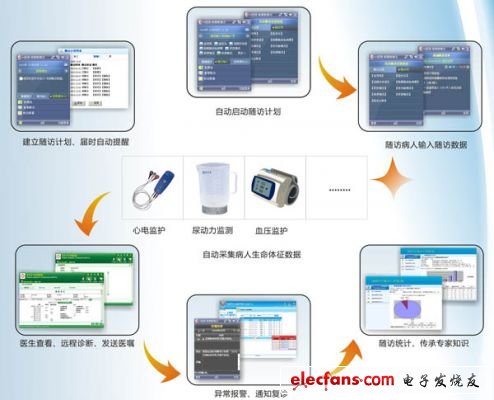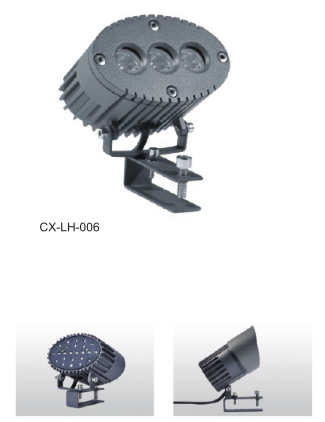With the popularization of hospital computer networks and the improvement of medical information systems, many hospitals have established powerful medical information management systems (such as HIS, PACS, etc.), and medical personnel can access such management systems through computer access to wired networks, and realize Computers have become indispensable tools for doctor rounds, patient monitoring, pharmacist dispensing and distribution, medical equipment management and real-time monitoring, drug inventory management, and electronic medical record review. The traditional fixed computer deployment method has limitations, which restricts the hospital informatization to play a greater role. The wireless network has the characteristics of terminal mobility and flexible and convenient access. It has been deployed in more and more hospitals, breaking the limitations of traditional wired deployment.

Wireless mobile technology applications
How to use the computer network to more effectively improve the coordinated operation of doctors, nurses and related departments is a problem that hospitals need to consider at present. The application of wireless local area network (WLAN) in hospitals has completely broken this limitation: wireless networks have the characteristics of mobile terminals and flexible and convenient access. In recent years, wireless technology has developed rapidly, and the transmission rate has also been qualitatively improved. More and more hospitals are being deployed on a large scale, so that hospitals can more effectively improve the work efficiency of doctors, nurses and administrators, and coordinate the orderly work of relevant departments.
In summary, the application of wireless technology in hospitals mainly includes the following aspects:
Wireless rounds
In the process of ward rounds, doctors often need to retrieve the patient's electronic medical record at any time, and give medical advice at any time according to the patient's specific medical condition at the time. The application of the wireless network can enable doctors to inquire about the patient's relevant information at any time through the mobile smart terminals that they carry with them, such as tablet computers and PDAs. It eliminates the trouble of holding a lot of case records in the past, and can more accurately, timely and comprehensively understand the patient's medical history details and treatment process. The doctor's ward round work becomes simple and easy, and patients can be diagnosed and treated in a timely and accurate manner.
Wireless medical order execution
The patient needs to go through three steps from treatment to treatment: the doctor examines the patient and obtains a preliminary diagnosis, and then issues a medical order. The nurse transfers the medical order to the infusion or treatment card and prepares to execute it. Each step of these three links is crucial. Due to the limitations of technology and objective conditions, the hospital has long been unable to effectively reduce the occurrence of medical errors by taking various measures.
With the development of wireless network technology and identification technology, information such as patient identity, medicines, blood bags, etc. have been digitized. Each step in the execution of medical orders can be checked and confirmed in real time by the computer system, which will ensure patient safety and effectively improve Medical quality plays a huge role in reducing medical errors.
Wireless medical device management
Medical equipment is not only a necessary condition for medical treatment, teaching and scientific research, but also a material basis and prerequisite for improving the quality of medical treatment. The medical equipment of general hospitals accounts for about 1/2 of the fixed assets of the hospital, and the economic benefits account for about 2/3 of the capital income of outpatients and inpatients. It is also the main source of medical information generated by the hospital. Hospital medical equipment management is very important. The quality of equipment management is directly related to the quality of economic benefits. The real-time positioning technology provided by the wireless network can track the location of the medical equipment in the hospital in real time, and can calculate the utilization rate of the medical equipment according to the location and output statistical reports; therefore, it can greatly improve the management level of medical equipment.
Special patient management
Special patient groups include: infants, mental patients, disabled patients, sudden illness patients, and children patients. Such groups are relatively poor in self-management ability and require more comprehensive and meticulous care by the hospital. Combining WiFi technology and radio frequency identification technology, it can realize real-time location information query, emergency alarm, hospital special heavy management, safety range definition, etc. to improve the hospital management level.
Wireless infusion
Many medical accidents are caused by errors in the infusion process. For most hospitals, how to effectively manage the infusion of patients, especially outpatients, is a problem. The wireless infusion management system based on WiFi technology can solve the problem of infusion in patients in a complex environment with limited space and large personnel mobility, such as outpatient clinic. During the patient's infusion process, all the verification work is realized by the nurse holding a wireless PDA with a scanning function, and all processes such as taking medicine, dispensing medicine, and infusion are supported by professional systems. The corresponding barcode automatically generated by the system contains information such as patients, medicines and seats, so that the medical staff can see it at a glance and effectively eliminate the hidden dangers of previous manual operations. Realize the correct patient, correct medicine, correct dosage, correct time, correct usage.
Wireless doctor
Long queues in outpatient clinics and poor medical environment are common problems in hospitals at present, reducing waiting for medical consultations, improving the efficiency of diagnosis and treatment, and avoiding becoming infected as a matter of urgency because of waiting for medical consultations. After the wireless network is deployed, doctors can register and transmit the number of patients receiving or waiting to the computer of the divisional staff at the front desk through the equipped tablet or PDA, so that the divisional staff can understand the current situation of each outpatient doctor , Timely deployment of resources.
When prescribing prescriptions, doctors can learn about the types and quantities of drugs in prescriptions through wireless network devices. In order to avoid the situation that the patient takes the wrong medicine due to the illegible writing and manual operation when formulating the prescription, the diagnosis and treatment efficiency is improved.
Concerns about the application of wireless technology in hospitals
Interference from wireless devices
All along, the domestic medical industry has been cautious about the use of wireless networks. Although the characteristics of flexible wireless network and simple deployment are very helpful to the development of hospital business, whether wireless network equipment has radiation and interference problems with medical equipment and patients (especially patients with built-in cardiac pacemakers) when working , The hospital always has doubts.
Seamless mobility and security features of wireless devices
The mobility of communication terminals is very important to the medical industry. Because the work requires medical staff to be constantly mobile, only by receiving patient calls and condition information at any time in the hospital can we better realize the concept of "patient-centric" personal medical services. WiFi technology is the preferred technology to meet the needs of medical mobile communications, but whether medical staff will lose communication during the mobile process, the transmission stability of wireless LAN, network security and other factors have become the focus of hospitals.
Led Tile Slots Lamp is commonly used in ancient architectural lighting, one light and one light, and the other side is the function of light casting.In addition, the luminaires can be equipped with a glare shield.The new energy-saving lamps with high power LED as the light source adopt optical grade PMMA high efficiency lens with low light loss and good illumination.The unique switching constant current source technology ensures that every LED works stably.It has good light transmittance, dust prevention and waterproof performance. The outer shell is made of aluminum alloy die casting parts for superconducting heat dissipation.Especially suitable for landscape architecture, ancient buildings, glazed tiles, villas, parks and other landscape decoration.The protection grade is up to IP65, which can adapt to various indoor and outdoor temperature and humidity environments.The color has the effect of red/yellow/blue/green/white/color change/full color etc.

Product size

Led Tile Slots Lamp,Led Project Lamp,Led Night Lamp,Led Mood Lamp
Jiangsu chengxu Electric Group Co., Ltd , https://www.satislighting.com